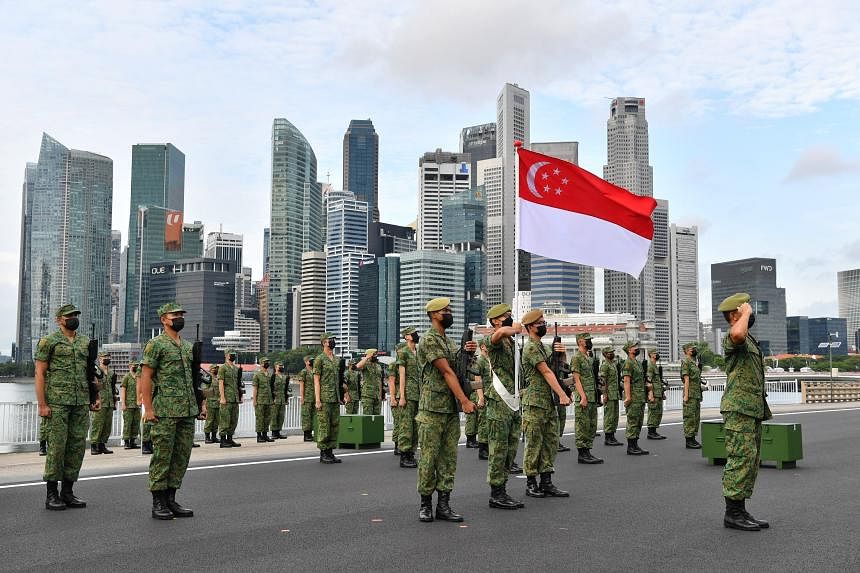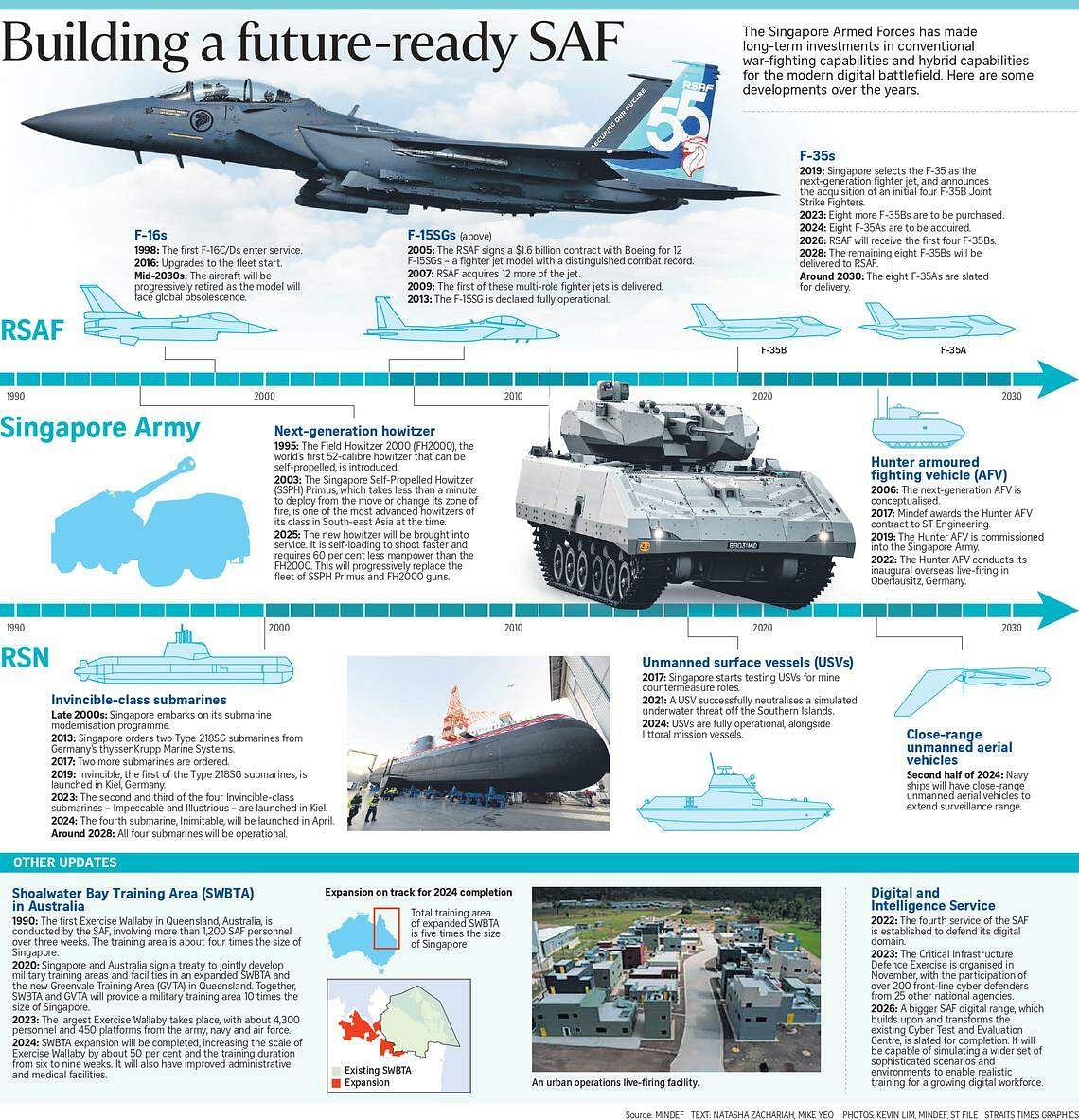SINGAPORE – Anyone following the news would not need convincing that the world has become a more dangerous place, Defence Minister Ng Eng Hen said on Feb 28 as he made clear the need for continued investment in the Singapore Armed Forces (SAF) to deter aggression against Singapore.
To keep the SAF strong, the Republic will keep military spending at about 3 per cent of gross domestic product (GDP) over the next decade.
This is barring any conflicts or wars, Dr Ng said during the debate on the Ministry of Defence’s budget. He announced several updates to the SAF’s platforms, including that the Republic of Singapore Air Force (RSAF) would acquire eight F-35A fighter aircraft to complement the 12 F-35Bs that it previously bought.
In his speech, he noted that the Russia-Ukraine conflict is in its third year, while there are worries that the Israel-Hamas conflict could spread beyond Gaza. A de facto trade war between the US and China has started, and there are worries that both countries could clash over Taiwan, he added.
All this means that he has changed his assessment of the risk of regional and global conflicts from being unlikely to being “non-zero”, said Dr Ng.
“I can assure this House that surprises and unintended consequences are in store – some linked, others completely out of the blue,” he added. “When the ambient temperature of geopolitics rises, sparks and fires will arise from multiple sources.”
Recounting the 1990 invasion of small and wealthy Kuwait by its neighbour Iraq, Dr Ng noted that the US went to the rescue, leading a 42-country force.
If something similar were to happen here, the Government, Mindef and the SAF do not plan on the basis that another country will come to Singapore’s rescue, said Dr Ng.
“If Singaporeans will not or cannot defend Singapore, there is no backstop. That is the simple truth,” he said.
Mindef’s budget for the coming financial year is projected to be $20.2 billion – a 2.5 per cent increase from financial year 2023.
Dr Ng said that while Singapore’s defence spending has increased nominally in recent years, the share as a percentage of GDP has been falling, mainly due to faster economic growth.
Defence spending has fallen from 5 per cent of GDP two decades ago to 3 per cent today, even as total government spending has risen from 16 per cent to 18 per cent of GDP, he said.
This has been possible without compromising the Republic’s defence capabilities due to consistent and sustained investment in defence, which is the most effective and efficient means of building a strong military over the long term, added Dr Ng.
Noting that military capabilities need years to mature and produce results, he said Singapore is reaping the dividends of its long-term spending.
For instance, the RSAF began evaluating the F-35 in 2004, before announcing its first purchase of four of the planes in 2019. When the F-35s are delivered from 2026, they will enable the air force to progressively draw down its ageing F-16s while maintaining a capable air force, said Dr Ng.
Meanwhile, the Republic of Singapore Navy will launch its fourth and final Invincible-class submarine in Kiel, Germany, in 2024. This is the culmination of a programme that started in the late 2000s in which the submarines are custom-made for Singapore’s needs, he said.
All four submarines will be operational around Singapore waters by 2028, said Dr Ng, who called the vessels a strategic asset even if they have been a “hefty investment”.
For the army, the next-generation armoured track carriers and next-generation howitzers will enter service, providing soldiers with more protection, mobility and firepower, he added.
Taken together, steady defence spending has built up a modern SAF with a full suite of capabilities against threats in the air, on land, at sea and in cyberspace, said Dr Ng.
Ultimately, however, the SAF is only as good as its people, he stressed. That is why sizeable investments have been made to build up infrastructure so that national servicemen and regulars can train more effectively and with greater realism.
This includes the Safti City Phase 1 and three instrumented battle circuits at home. Abroad, an expanded Shoalwater Bay Training Area in Queensland, Australia, is nearly complete, which will allow the SAF to scale up its annual exercise there by close to 50 per cent, said Dr Ng.
Noting that the SAF has been training in Shoalwater Bay since 1990, he said: “This initiative is another example of steady commitment and investment in building defence capabilities.”
Thanking MPs for their consistent support of the defence budget, Dr Ng noted that Singapore spends precious dollars consistently on defence, which could have benefited other causes.
“But we know that without security, there can be no progress,” he said.



